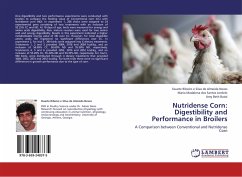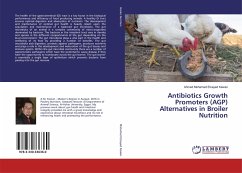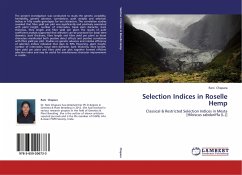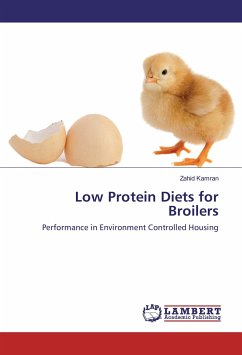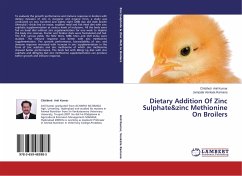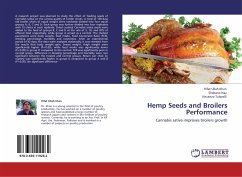
Hemp Seeds and Broilers Performance
Cannabis sativa improves broilers growth
Versandkostenfrei!
Versandfertig in 6-10 Tagen
32,99 €
inkl. MwSt.

PAYBACK Punkte
16 °P sammeln!
A research project was planned to study the effect of feeding seeds of Cannabis sativa on the carcass quality of broiler chicks. A total of 160 days old broiler chicks of equal weight were randomly divided into four equal groups A, B, C and D. Each group was further divided into four replicates with 10 chicks in each replicate. Dried crushed Cannabis sativa seeds were added to the feed of groups B, C and D at the rate of 5, 10, and 20% of offered feed respectively, while group A served as a control. The studied parameters were body weight, feed intake, Feed Conversion Ratio (FCR), dressing per...
A research project was planned to study the effect of feeding seeds of Cannabis sativa on the carcass quality of broiler chicks. A total of 160 days old broiler chicks of equal weight were randomly divided into four equal groups A, B, C and D. Each group was further divided into four replicates with 10 chicks in each replicate. Dried crushed Cannabis sativa seeds were added to the feed of groups B, C and D at the rate of 5, 10, and 20% of offered feed respectively, while group A served as a control. The studied parameters were body weight, feed intake, Feed Conversion Ratio (FCR), dressing percentage, mortality and economics. After an experimental period of 42 days, the data were analyzed statistically. It was revealed from the results that body weight gain, breast weight, thigh weight were significantly higher (P0.05), while feed intake was significantly lower (P0.05) in group D compared to the control. FCR was significantly poor in control group. Difference in dressing percentage and mortality were non significant between the treated and control groups. Return per chick (in rupees) was significantly higher in group D compared to group A and B (P0.05). No significant difference



